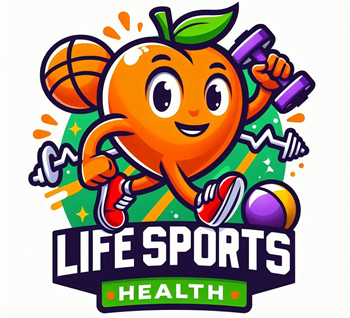Muscle pain can appear after playing sports or even after a bad night’s sleep. Find out how to treat them.
Muscle pain affects us at some point in our lives, whether we are a sedentary individual or a high-performance athlete. We are all subject and exposed to muscle injuries.
These aches might be caused by an increase in lactic acid generated by the muscle during exercise, or by muscle fiber degradation.
TYPES OF MUSCLE PAIN
Restarted the activity with a volume or intensity disproportionate to their physical conditioning, or even those without the habit of practicing any sport, who performed a load of vigorous muscular exercise. .
As a rule, discomfort and pain begin a few hours after the end of physical activity, becoming more intense in the following 24 to 48 hours .
Muscle Cramps
Cramps are due to a lack of magnesium in the body or its decrease due to increased sweating during sports. The result is muscle spasms in the calves of the legs, with a lot of muscle pain.
Muscle tensions
Poor posture or sitting for hours can lead to tension. Sleeping in an uncomfortable position or an unfavorable movement can cause muscle pain in the shoulders, neck or back. The affected regions are most often hardened and painful to the touch.
Stress
Stress can be responsible for headaches and also muscle pain. The muscular tension generated by work, household chores, and traffic can result in physical pain.
Muscle diseases
Some diseases, such as fibromyalgia and rhabdomyolysis, cause severe muscle pain.
MUSCLE PAIN: SIGNS OF MUSCLE DAMAGE?
Exercise-induced injuries can result from two types of stress: metabolic or mechanical.
The metabolic stress model refers to the initial events in exercise-induced muscle damage. They are caused by metabolic deficiencies within the muscle in full activity. The mechanical stress model refers to the damage that occurs as a direct consequence of mechanical loads on myofibers (muscle fibers).
Muscle pain is often accompanied by physical signs of fiber damage. Some signs indicate greater severity, namely:
- Localized edema;
- Increased tension of the surrounding tissue;
- Ecchymosis (blood stain) or hematoma, appears in injuries of greater extent and severity.
HOW TO PREVENT MUSCLE PAIN?
To prevent muscle pain you should:
- Have regular physical activity.
- Hydrate properly.
- Stretch your muscles and warm up correctly before starting any sport.
- Do relaxation exercises, such as yoga.
- Maintain correct posture when sitting, running and walking.
HOW TO TREAT MUSCLE PAIN?
To treat muscle pain, don’t forget that rest is essential, as it has a restorative effect on the muscles. In fact, the resting muscle can recover more easily. Additionally, you can resort to the following forms of treatment:
Ice
It should be taken when there is inflammation, discomfort, swelling, redness, a rise in temperature, and a loss in strength and/or mobility. Ice reduces swelling and discomfort while also limiting the amount of the damage.
An ice pack should be administered for 15 minutes, three times each day. You can also immerse yourself in cold water for 15 minutes at a temperature of around 10 ºC.
Heat
The hot water bottle is only useful in cases of chronic muscle tension. That is, when there is muscle tension that causes pain and reduced mobility. Heat temporarily relieves excessive muscle contraction.
Massages
Massage can also relieve muscle pain, as it occurs due to the breakdown of muscle fibers and the natural release of lactic acid. Massaging the painful area helps reduce the concentration of this acid. Massage also allows the muscle to be oxygenated more quickly.
Contrast
The contrast technique consists of alternating exposure to cold and heat and aims to increase metabolism. In sport, it has been used in recovery processes, also aiming to remove lactic acid from the blood.
Supplementation
Supplementation is the ingestion of items before, during, and/or after exercise in order to help with energy consumption and/or vitamin and mineral absorption. Carbohydrates, proteins, branched-chain amino acids (BCAAs), and antioxidants are the most commonly taken supplements during exercise or to aid with muscle pain recovery.
Medicines
Analgesics, anti-inflammatories, and muscle relaxants can be used to reduce temporary muscular discomfort, as well as muscle contractions produced by trauma.
No treatment should be carried out for a long time, in case of persistent pain you should always consult your doctor.
Active recovery
It is the practice of performing continuous low-intensity aerobic exercise. This approach can assist to alleviate the symptoms of exercise-induced injuries by boosting blood flow and hence the rate at which toxic waste is eliminated. Furthermore, it increases the release of endorphins, which have analgesic properties.
Other methods
There are also numerous other methods that can be used therapeutically, which aim to accelerate the recovery process from post-exercise muscle pain, such as:
Myoelectric stimulation, ultrasound, hyperbaric oxygen therapy, compression garments, homeopathy
These techniques are exclusively utilized by high-performance athletes since they are expensive and difficult to get.
WHEN SHOULD YOU SEE A DOCTOR?
Muscle pain is normally benign in nature. In case of persistent pain, you should consult your doctor, as it could be a muscular or bone disease.

